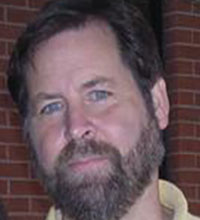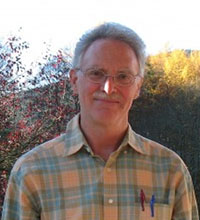
Math Distinguished Lecture Series
2025 | Learning to Care: Can AI/ML help fix the U.S. Healthcare System?
Speaker: Dr. Jeff Humpherys, Missouri S&T University
Thursday, April 3, 2025, 12:30-1:30 (Refreshments at 12:15) Dwire 121
Event Poster
ABSTRACT: The healthcare ecosystem is a complex network of patients, providers, and payers that involves a variety of nuanced decision-making processes. We give an overview of some of the challenges in the US Healthcare System and the role that AI/ML can play in helping to manage and inform clinical decisions. Specifically, we highlight two areas of research: (i) the development of computational phenotypes (or medical concepts) to improve clinical understanding and (ii) the application of AI/ML for survival analysis which can inform personalized treatment strategies. Through these efforts, AI/ML has the potential to significantly enhance both the precision and efficiency of healthcare delivery.
About the speaker: Dr. Jeffrey Humpherys is the Kummer Endowed Professor of Data Science in mathematics and statistics at Missouri S&T University. His research focuses on the mathematical foundations of artificial intelligence and machine learning (AI/ML). He uses AI/ML in healthcare to develop medical devices and health informatics solutions that predict the onset and severity of both chronic and infectious diseases, and identify their optimal care pathways. He has also published several papers in nonlinear dynamical systems and stochastic control theory. Dr. Humpherys was most recently the chief data scientist at Harbor Health in Austin, Texas. He also previously served as a research professor at the University of Utah’s School of Medicine, chief data scientist at Owlet Baby Care, vice president of research at UnitedHealth Group, and professor of mathematics at Brigham Young University. He earned a Ph.D. in mathematics from Indiana University and a bachelor’s degree in mathematics from Utah State University.
______________________________________________________________________________________________________________________
2018 | Interlacing of Zeros and Wendroff's Theorem
Speaker: Dr. Kathy Driver, University of Cape Town
Event Poster
ABSTRACT: Suppose x_1,..., x_n and y_1,..., y_{n-1} are two lists of real, distinct, points satisfying the INTERLACING property x_1 < y_1 < x_2 < y_2 < · · · < x_{n-1} < y_{n-1} < x_n. In 1961, Wendroff proved that if P_n(x) = (x - x_1) · · · (x - x_n) and P_{n-1}(x) = (x - y_1) · · · (x - y_n) are the monic (highest coefficient equal to 1) polynomials with simple zeros at x_1, x_2,..., x_n and y_1, y_2,..., y_{n-1} respectively, there exist infinitely many sequences P_0, P_1,... of orthogonal polynomials with P_n(x) and P_{n-1}(x) as above. We explain what sequences of orthogonal polynomials are and why they are important, and we give the original straightforward beautiful, elegant proof of Wendroff's Theorem which shows that the interlacing of the zeros of P_n and P_{n-1} is crucial in the construction of orthogonal sequences.
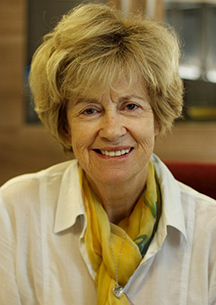
______________________________________________________________________________________________________________________
2016 | Mathematical Problems that Cannot be Solved
Speaker: Dr. James Mitchell
ABSTRACT:
Many early experiences of mathematics involve learning methods for solving certain types of problems, such as quadratic equations, finding derivatives in calculus, and so on. A conclusion that is often drawn from this is that every problem in mathematics can be resolved by means of some mechanical method. At the start of the 20th century this view was shared by many mathematicians. They sought to remove human ingenuity from mathematics and to find ''a universal procedure for determining the truth or falsity of any mathematical statement. ''In this talk I will address the question of whether or not all of mathematics can be reduced to a mechanical procedure, and what precisely a mechanical procedure is in the first place.

University of St Andrews
Event Poster
2015 | Applied Mathematics and the Science of Analysis
Speaker: Dr. James Keiser
ABSTRACT: Mathematics is the foundation upon which scientific advances are built the ability to think abstractly, logically and by analogy is crucial to researching, developing and enabling new analytic capabilities, from both pure and applied perspectives, across a multitude of disciplines. One such emerging discipline ls that of making sense of Big Data in the age of the Internet of Things. The goal of these analyses will enable decision makers to be quantitatively accurate and more effective in their jobs, thus creating Decision Advantage. These developments are requiring the development of new mathematical analysis, modeling and simulation techniques for the dual purposes of building Global Awareness and Strategic Foresight
One of the primary goals of the Laboratory for Analytic Sciences (LAS) is to understand the Intelligence Analysis Process (IAP) in order to adapt and optimize it to better serve our users: including technical and mission researchers, as well as our customers, stakeholders, and policymakers. This requires developing new analytic frameworks to enable modeling, enhancing, and optimizing the IAP. These frameworks will form the foundation of the Science of Analysis in both the pure and applied domains. In the course of developing this new "calculus of analysis" we will be informed not only by the questions being asked, but also by the components and mathematical formalisms we develop at the LAS to analyze intelligence analysis. These formalisms will span the processes and flows of analysis, the representation of data, knowledge
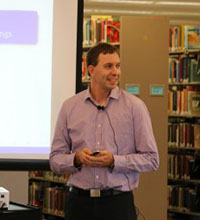
University of Waterloo
2014 | Game Theory and the Mathematics of Altruism
Speaker: Dr. Jason Bell
ABSTRACT:
Game theory is a branch of mathematics that deals with strategy and decision making and is applied in economics, computer science, biology, and many other disciplines as well. We will discuss some of the basic points of game theory and discuss the so-called iterated prisoner dilemma, a game that is of central importance in the study of cooperation between individuals. We will then describe various strategies to this game and explain why altruism is something that can evolve naturally.
Read more about Dr. Bell's talk in the UCCS Communique.
2013 | Secrets From Deep Human History
Speaker: Dr. Joseph Watkins
ABSTRACT:
Spectacular advances in the technologies that produce genetic data and continued advancement in probability theory and statistical inference have combined to dramatically alter our understanding of deep human history. For example, the sequencing of ancient DNA from Neanderthal bones in Croatia and in Denisova Cave in the Altai Mountains came with new inferential strategies that led to the finding of their genetic signatures in modern humans. In this talk, we will explore the extent to which similar events took place in Africa where we have not yet found any ancient human remains to be sequenced. Comparisons with primate genomes provide a second look at deep human history. Thus, we will spend a few minutes to introduce the steps our group is taking to examine how evolutionary pressures have impacted the human genome.
2012 | Mathematics and the Ocean
Speaker: Dr. Jerry L. Bona
ABSTRACT:
Describing various aspects of the Earth's oceans using mathematics goes back to the 17th century. Some of the world's greatest mathematicians and physicists have been involved in this enterprise. The lecture will begin with a cursory sketch of some of the more important milestones in the mathematics of the ocean. We will then move on to indicate briefly an example taken from water wave theory of how mathematical models are created. We then turn to some of the more spectacular applications of the theory. This will involve us in tsunami propagation, rogue waves and near-shore zone sand bars and beach protection, as time permits.
ABOUT THE SPEAKER:
Jerry L. Bona received his PhD in 1971 from Harvard University under supervision of Garrett Birkhoff and then worked at the Fluid Mechanics Research Institute at University of Essex. Subsequently he was faculty member at the University of Chicago, Pennsylvania State University and the University of Texas at Austin, before joining the University of Illinois at Chicago.
He is well-known for his contributions to the fields of fluid mechanics, partial differential equations and computational math and has been active in other branches of pure and applied mathematics, ocean engineering and economics.
Read more about Br. Bona's talk in the UCCS Communique.
2011 | Random Planar Maps
Speaker: Dr. Omer Angel
ABSTRACT:
A planar map is a planar graph embedded in the plane, considered up to continuous deformations. These objects have been studied extensively in combinatorics, physics (as discrete random surfaces) and more recently probability theory. Much progress has been made in recent years in understanding the typical structure of these objects, and glimpses of a deeper theory are visible, particularly connecting the scaling limit of random planar maps with conformally invariant models of statistical physics. I will survey some results and conjectures concerning these objects and discuss some recent progress in understanding percolation and random walks on these random graphs.
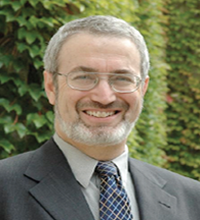
Northwestern University
2010 | Computational Modeling of Neurons
Speaker: Dr. William L. Kath
ABSTRACT: With its approximately 100 billion neurons and 200 trillion connections, the human central nervous system is astoundingly complex. Nevertheless, experimental advances are rapidly revealing new insights about the workings of neurons and the networks in which they are connected. Simultaneously, computational models of neurons have grown swiftly in terms of both their capability and utility. When constrained by experimental data, such models greatly enhance the observations and provide tools to construct new experimentally testable predictions. In this talk I will describe how this two-pronged approach has helped explain some of the function of hippocampal CA1 pyramidal neurons, a group of principal cells in a region of the brain that is important for the formation of new memories. The models and experiments indicate that these relatively large neurons integrate and process their inputs in a two-stage manner, in that they first combine inputs in localized parts of the dendritic tree before making an ultimate determination whether or not to signal downstream neurons with an action potential.
ABOUT THE SPEAKER:
Bill Kath is a professor in the Departments of Engineering Sciences and Applied Mathematics & Neurobiology and Physiology. From 2005-2010 he was the Co-Director of the Northwestern Institute on Complex Systems at Northwestern University. His research interests include computational neuroscience, nonlinear optics, linear and nonlinear wave propagation and nonlinear dynamics. He received the NSF Presidential Young Investigator Award in 1985, was elected a Fellow of the Optical Society of America in 2007 and elected a Fellow of the Society for Industrial and Applied Mathematics in 2010. He has over 150 peer reviewed publication and 4 US patents.
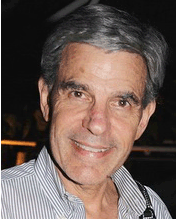
University of Colorado at Boulder
2009 | Extraordinary Waves: From Beaches to Lasers
Speaker: Dr. Mark J. Ablowitz
ABSTRACT:
Waves are fascinating. There are a class of extraordinary, localized waves, called solitary waves or solitons which were first documented 175 years ago. This lecture will trace the history of these waves, their associated mathematics and will explain why mathematics played a crucial role in both historical and modern developments. Applications range from water waves to giant internal ocean waves to long distance communications, lasers and Bose-Einstein condensation and more. The discussion will be general and will leave all equations behind.
ABOUT THE SPEAKER:
Mark Ablowitz is considered a pioneer in the field of applied mathematics, and his work in the field is among the most highly cited in the world. He is best known for his landmark contributions to the "inverse scattering transform," or IST, a method used to solve nonlinear wave equations. Mathematicians and physicists have used the IST to gain a better understanding of phenomena such as water waves. Ablowitz joined the CU-Boulder faculty in 1989.

